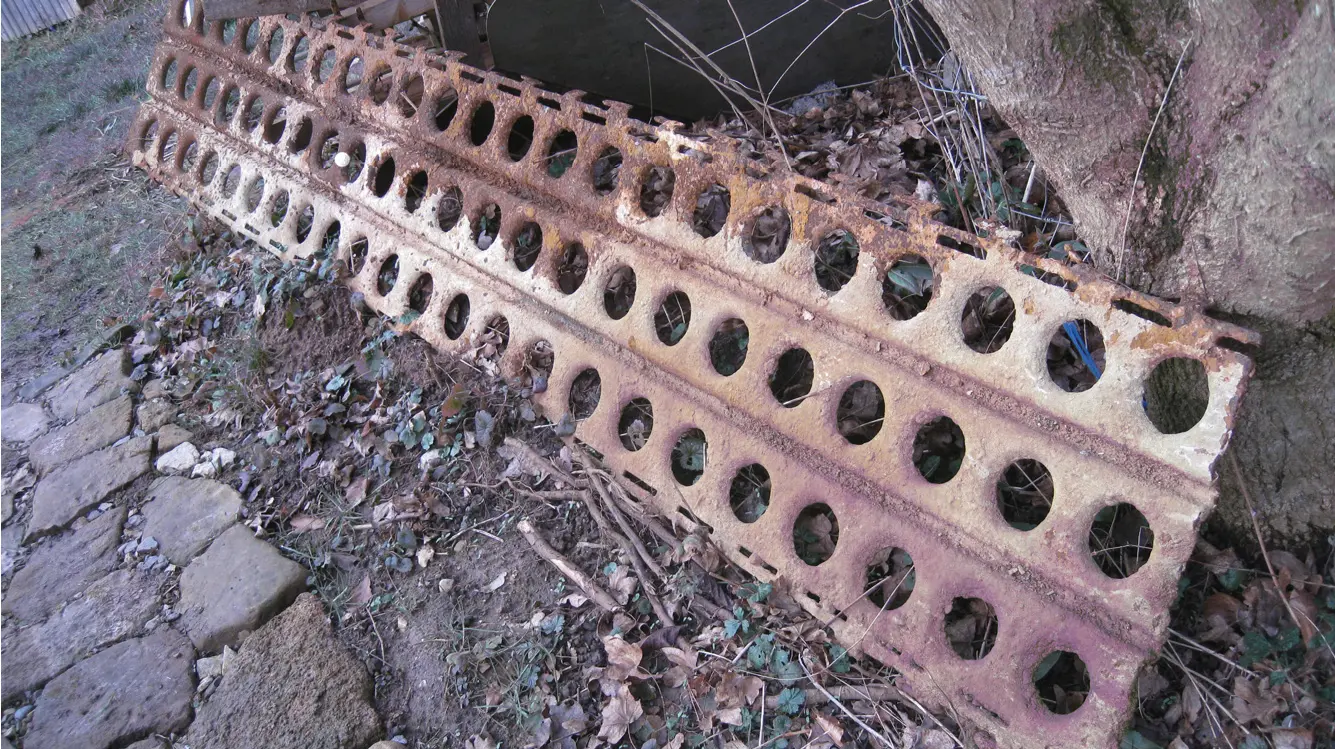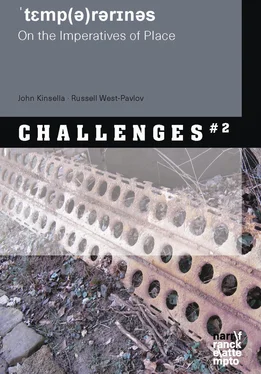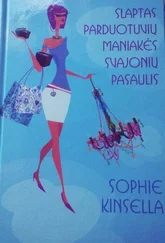Page 222: Terraces above Kaštel Gomilica © Russell West-Pavlov
Page 224: Track above Kaštel Gomilica © Russell West-Pavlov
Page 260: Mushroom rock © John Kinsella
Page 300: Track near Landkutschers Kap © Russell West-Pavlov
Page 304: Wagenburg, Französisches Viertel, Tübingen © Russell West-Pavlov
Page 308: Hochsitz, Landkutschers Kap © John Kinsella
Page 310: Anomalous Concretion, Text © John Kinsella, Image © Russell West-Pavlov
Page 312: Hochsitz, Bläsiberg, Image © Russell West-Pavlov
Page 316: Track near Burgholz © Russell West-Pavlov
Page 318: Sun Orchid Concretion © John Kinsella
Page 322: Mungart Concretion © John Kinsella
Page 336: Classical column, Natursteinpark, Wankheimer Täle © Russell West-Pavlov
Page 342: Mungart Concretion © John Kinsella

It glints dully on the side of a branch of cobbled pathway that passes through a gap in a straggly hedge. It is a strip of metal sheeting—laterally ribbed, punched with an even array of holes, a long piece of mattly rusted steel not quite flush with the ground so that a sort of malaise emanates from its patently temporary presence. It’s a metre-long length of so-called Marston Matting, or Perforated Steel Planking (PSP), which has migrated down the hill from the erstwhile French military training areas around the Wankheimer Täler, to the residual hippy trailer park that we call the Wagenburg—a now more-or-less permanent settlement of construction-workers’ caravans converted into a sort of a commune-cum-trailer park. This sheet of Marston Matting is probably of American origin. The stuff was first manufactured during the Second World War for use in the Pacific campaign and the invasion of continental Europe. The prefabricated matting was intended to provide an easily assembled road or runway surface to stabilize muddy or marshy ground. The individual elements were perforated to reduce weight, given lateral corrugations to stiffen them, and were equipped with a hook-and-slot system on opposite edges to allow each sheet to be connected to its neighbours. The modular units were designed to provide an artificial ground more permanent that the shifting soil they covered. But by the same token, they could be transported easily, laid quickly, and if necessary, ripped up equally rapidly to be rebuilt elsewhere.
Typically, the steel matting has always been geographically mobile, also being used in Germany, for instance, to strengthen the runways at Tempelhof and Tegel airports during the Berlin airlift. This is perhaps the ‘origin’, if one can use this term at all for such ephemeral building material, for the matting that I am photographing here. Marston matting has been frequently reused for more peaceful purposes than originally intended: as fencing material, as door strengthener, or in one of my favourite examples, as wine rack (you can slot a lot of bottle necks into a slab of Marston!). Symptomatically, when I went back to the Wagenburg to take more photos of this material, I discovered that it was no longer where I had last seen it. It had migrated onwards on its trajectory of serial temporarinesses.
The steel matting was produced with a high manganese content, so that it was resistant to corrosion, as the reasonably good state of the sheeting I found showed. This means that, paradoxically enough for a building material designed for the construction of temporary runways and road surfaces and frequently transported to new sites and re-used for diverse projects, it is itself endowed with a considerable degree of permanency. A recent clean-up of the now decommissioned military zone (one of a series that has progressively removed old munitions and military junk from up on the hills) dredged up quantities of this steel matting in pretty good nick. It is entirely plausible that the sheet that I photographed has an eighty-year history of repeated usage in various theatres of war or mock-war, from the Second World War through the Cold War, into the post-Cold-War era—a concatenation of epochs that has seen so many low- and high-tech conflicts around the globe. The steel matting, in its very material existence, or perhaps more appropriately, existences, is an embodiment of the dialectics of temporariness and permanence that is a core preoccupation of this book.
This relic of numerous wars, non-wars or proxy-wars, lying about in a hippy commune on the edge of a South German university town, fascinates me. It seems emblematic of the relationship to place that John Kinsella and I explore in these pages. The sheet of matting lies on the ground, propped lightly against the base of a tree trunk, half in contact with the earth, half floating in the air around it—displaying its readiness to go elsewhere at the drop of a hat. The matting is a prosthetic analogy for the ground, porous like the soil and its latticework of crystalline particles, constructed of minerals drawn from the earth, of it but not of it. It is a modern technological hybrid, derived from but somehow alien from the ground. It is both related to the soil, yet oddly remote from that with which it so intimately snuggles.
The matting creates around itself a palimpsestic, laminated configuration of elements—earth and air, perhaps also water and fire—which might be construed as a concrete metaphor for the very nature of the temporality of the earth and our modern relationship with it. Indeed, the iconic similarity between our title, tɛmp(ə)rərɪnəs (‘Temporariness’)—transcribed into International Phonetic Alphabet in a gesture towards the contingent singularity of the verbal speech act itself—and the perforated steel matting is not coincidental. If language, for Heidegger (1949: 24), was the house of being, we implicitly suggest in this way, that temporariness, in its material and linguistic forms, is the latticework of becoming.
Coeval with the ground, the steel matting both connects and separates the earth and those who stand upon it. The matting migrates, like those who walk or work upon it. The metal sheeting exists in an uneasy semiotic relationship with its environment. Is both an icon of the surface of the ground and a metonymy of it, and in my recycling of it here, a metaphor for the complex relationship between temporariness and permanency that John and I explore in this book. It is also an artefact of war, which destroys many of the relationships that language depends upon and that it seeks to illuminate. So close to nature in its intended capacity of lying layered upon the earth, but so immensely indicative of what Sebald (2004) has called ‘a natural history of destruction’, this sheet of matting is an index of the annihilation of the earth of which John and I are constantly reminded—not unlike Sebald himself, who discovers on his walk through Norfolk and Suffolk ‘traces of destruction, reaching far back into the past, that were evident even in that remote place’ (2002: 3).
I am fascinated by this material—I say it again. It exerts a powerful attractive force upon me. Inert, passive, but at the same time absolutely interactive (any one sheet of Marston matting is designed to slot into others), it also interacts with me. Like a dumb interlocutor, its perforations so many mute interrogations, it coaxes me into speech when I encounter it. An unnatural prosthesis of nature, it behaves, indeed, like any other inhabitant of the natural environment, giving me, quite literally, ground to stand upon in my own capacity as a walker and wordsmith. To the extent that it is there and calls to me, speaks with me, it gives birth to me in this particular instant and instance of my own series of temporary moments of existence.
Читать дальше













